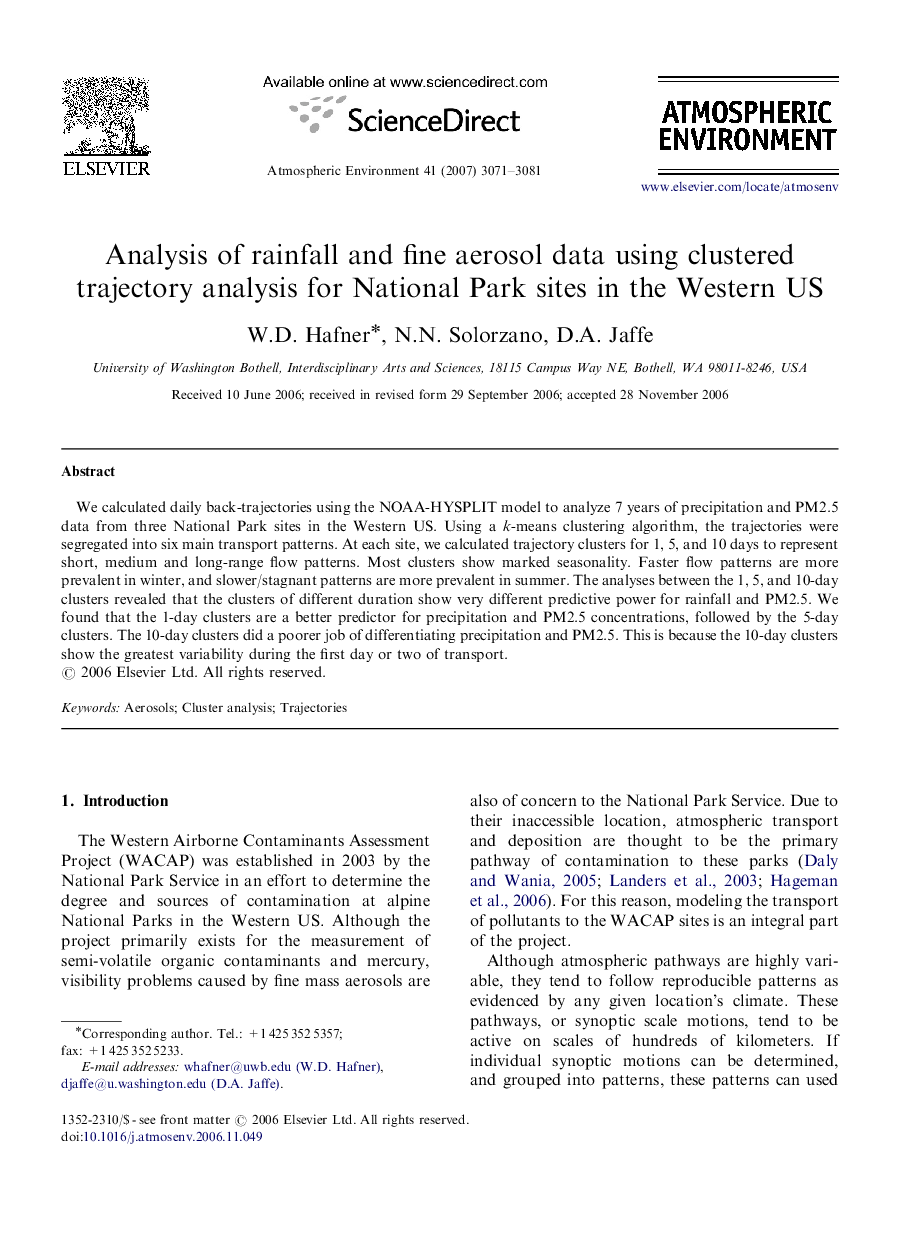| Article ID | Journal | Published Year | Pages | File Type |
|---|---|---|---|---|
| 4443346 | Atmospheric Environment | 2007 | 11 Pages |
We calculated daily back-trajectories using the NOAA-HYSPLIT model to analyze 7 years of precipitation and PM2.5 data from three National Park sites in the Western US. Using a k-means clustering algorithm, the trajectories were segregated into six main transport patterns. At each site, we calculated trajectory clusters for 1, 5, and 10 days to represent short, medium and long-range flow patterns. Most clusters show marked seasonality. Faster flow patterns are more prevalent in winter, and slower/stagnant patterns are more prevalent in summer. The analyses between the 1, 5, and 10-day clusters revealed that the clusters of different duration show very different predictive power for rainfall and PM2.5. We found that the 1-day clusters are a better predictor for precipitation and PM2.5 concentrations, followed by the 5-day clusters. The 10-day clusters did a poorer job of differentiating precipitation and PM2.5. This is because the 10-day clusters show the greatest variability during the first day or two of transport.
